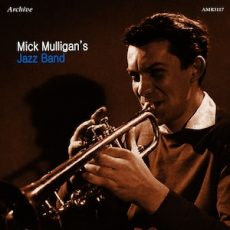
Daily Dose Of Jazz…
Peter Sidney Mulligan who was known by Mick, was born on January 24, 1928 in Harrow, Middlesex, England. He began playing trumpet while a student at Merchant Taylors’ School, Northwood and entered into the family wine company, but became an alcoholic and eventually was pushed out of the business by his relatives.
Forming his Magnolia Jazz Band in 1948, he met George Melly soon afterwards and they became close associates who performed together for many years. Mulligan’s orchestra included Roy Crimmins, Ian Christie, and Archie Semple that rivalled Humphrey Lyttelton’s band in popularity on the British trad jazz circuit.
While he booked excellent side men, Mick was not a top-flight musician and his own playing was often hampered by intoxication; their recording legacy is spotty because their releases were irregular and generally for small labels. He and Melly’s antics were drunken and scandalous outings, making them regular tabloid figures in the 1950s.
Breaking up his band in 1953 he reformed it a year and a half later, continuing with the new group into 1962 and was part of the biggest trad jazz event to be staged in Britain at Alexandra Palace. By the early 1960s, rock and roll had whittled the enthusiasm for trad jazz to nearly nothing and Mulligan disbanded the Magnolia Jazz Band. He went on to manage Melly, who was launching a solo career. He played occasionally into the 1970s, but mostly retired to run a grocery store. Later in life he became interested in horse racing, and owned or part-owned several race horses, including the prize-winning horse, Forever My Lord.
Trumpeter and bandleader Mick Mulligan, who was best known for his presence on the trad jazz scene, suffered a stroke at age 78 and died in Chichester, West Sussex, England on December 20, 2006.
More Posts: bandleader,history,instrumental,jazz,music,trumpet
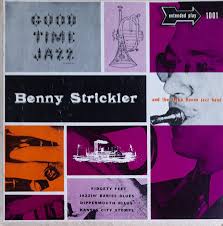
Daily Dose Of Jazz…
Benny Strickler was born in Fayetteville, Arkansas on January 9, 1917 and took music lessons as a pre-teen and later played in a town band. After graduating high school, he became a professional musician and played with several territory bands in Arkansas and the Southwest. In 1935, with wife Frances in tow, he joined the migration from the Dust Bowl to the Golden State.
Benny established himself as one of the top trumpeters in Los Angeles, California. He played with bands led by Ben Pollack, Joe Venuti, Vido Musso and boxing champ/string bassist Max Baer. He even got an invitation from Artie Shaw, which he turned down.
He recorded his first recordings in 1937 with the Choir of Brass led by vocalist/pianist Seger Ellis. In 1941 he went to work with Bob Wills’ Texas Playboys and along with Danny Alguire and Alex Brashear and reedman Woodie Woods they shaped the swinging sound of the band between 1941-42. World War II broke them up with some enlisting, others drafted, however, Benny was exempted due to tuberculosis.
His illness worsened and was ultimately forced to quit playing. He returned to Arkansas, checking into a Booneville sanitarium. Trumpeter Benny Strickler, who played with the top Western Swing and Traditional bands, played sporadically until he succumbed to the tuberulosis and died on December 8, 1946.
More Posts: history,instrumental,jazz,music,trumpet
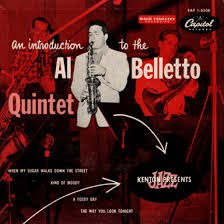
Daily Dose Of Jazz…
Al Belletto was born on January 3, 1928 and raised in New Orleans, Louisiana. He graduated from Warren Easton Charter High School before entering Loyola University New Orleans studying music and then earning a master’s degree from Louisiana State University.
Belletto played with Sharkey Bonano, Louis Prima, Wingy Manone and the Dukes of Dixieland in the 1940s and 1950s. He went on to lead his own band and record several albums on Capitol Records from 1952. Along with his ensemble they became part of Woody Herman’s band for U. S. State Department tours of South America in 1958 and 1959.
In the Sixtiess, Al worked at the New Orleans Playboy Club fronting the house band and serving as Musical/Entertainment Director, booking nationally known acts into the venue.
Saxophonist and clarinetist Al Belletto, who recorded six albums as a leader, died on December 26, 2014 in Metairie, Louisiana.
More Posts: bandleader,clarinet,history,instrumental,jazz,music,saxophone
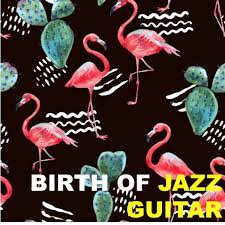
DailyDose Of Jazz…
Leonard Ware was born in Richmond, Virginia on December 28, 1909. He went to college at the Tuskegee Institute and learned to play the oboe.
By 1938 Ware was playing electric guitar on recordings by Sidney Bechet. He then started working with Jimmy Shirley, who was one of the first groups to have two electric guitarists.
In December 1938, he played at Carnegie Hall with the Kansas City Six alongside Lester Young and Buck Clayton. 1939 saw him recording Umbrella Man with Benny Goodman. He performed in a trio during the 1940s and recorded as a leader in 1947. Leonard also recorded with Don Byas, Albinia Jones, Buddy Johnson, and Big Joe Turner.
Ware was the co-composer of Hold Tight, which he recorded with Bechet and I Dreamt I Dwelt in Harlem with Jerry Gray and Buddy Feyne, which was recorded by Glenn Miller and The Delta Rhythm Boys in 1941.
Dropping out of music a few years later, guitarist Leonard Ware, who was one of the first American jazz guitarists to play electric guitar, died at the age of 64 on March 30, 1974.
More Posts: bandleader,guitar,history,instrumental,jazz,music
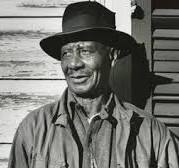
Daily Dose Of Jazz…
Tom “Kid” Albert was born on December 23, 1877 on a plantation field in Plaquemines Parish, Louisiana.. He later relocated to New Orleans, Lousiana sometime in his early childhood, settling in the Algiers neighborhood. Living in a run-down shack on Saux Lane, an impoverished strip near the Naval station. He initially played the guitar before learning how to play the violin and was taught basic methods for each instrument by Jimmy Palao.
In the 1890s he began working with the bands with violinist Johnny Gould, and with “Big Eye” Louis Nelson Delisle on clarinet. Soon after he mastered the cornet and the violin Albert’s first band in 1908 was his own which included Papa Celestin and Manuel Manetta. In 1920, he founded the Eureka Brass Band and during the earlier years his band played in Algiers with Henry Red Allen Sr. Band.
In his late thirties, Albert moved across the river to the French Quarter and reformed his band, branding it the Kid Albert Band. The band then began performing in several halls around the city, mostly in the Storyville and Treme sections. For a decade the Kid Albert Band played alongside jazz pioneers Louis Armstrong, Kid Thomas Valentine and other small brass bands but never recorded.
In 1949 trumpeter, violinist and bandleader Kid Albert retired from the bands and died on December 12, 1969, at the age of 91.
More Posts: bandleader,cornet,guitar,trumpet



